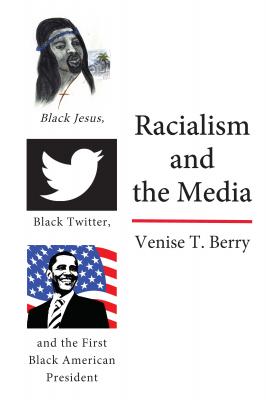ТОП просматриваемых книг сайта:
Racialism and the Media. Venise T. Berry
Читать онлайн.Название Racialism and the Media
Год выпуска 0
isbn 9781433172915
Автор произведения Venise T. Berry
Жанр История
Серия Black Studies and Critical Thinking
Издательство Ingram
Images in the news also send certain messages concerning black culture generally. Wing (2017) argues that the mainstream media sometimes treats white killers better than black victims. He reviewed a plethora of news stories that demonstrated how officials seemed dismissive or unsympathetic to black victims some even blaming them for their own deaths. Wing’s research showed that stories about black victims become character assassinations, while white criminals are written from a more positive and empathetic perspective. The article, included examples for black victims like, “Montgomery’s latest Victim had a history of narcotics abuse, tangles with the law” (Ala.com, 2014), “Travon Martin was suspended from school three times” (NBC News, 2013), and “Police: Warren shooting victim was a gang member” (WKBN, 2014). Along with examples for white criminals, “Santa Barbara Shooting: Suspect was soft spoken, polite, a gentleman, ex-principal says” (Whittier Daily News, 2014), “Oregon School Shooting Suspect fascinated with guns but was a devoted Morman, his friends say” (FOX News, 2014), and “Ala. Suspect brilliant, but social misfit” (Lubbock-Avalanche Journal, 2010).
An extensive study on news and opinion media conducted by Dixon (2017) found that many outlets misrepresent blacks in association with criminality, poverty, welfare recipients, and generally instability. His two-year study reviewed more than 800 news stories reported distorted representations, inaccurate information, and racially biased coverage which is a serious problem. Finally, Jan (2017) explains that media outlets routinely show poor black families as dependent and disfunctional while white families are usually depicted as stable. She cites a 2017 report by racial justice organization Color of Change that suggests political rhetoric and public policy are often fueled by stereotypes like absentee fathers, criminality and poverty in the inner city.
Ghettofabulous in Rap Music
In real life, according to a report by Lewis (2015), rapper Brandon Duncan known as Tiny Doo was charged with nine counts of gang conspiracy and faces 25 years in prison. Although Duncan did not shoot anyone, he was apparently linked to the gang responsible for a number of shootings when his mixed tape was released a year later. ←32 | 33→Because a couple of his songs described the murders in detail the prosecutor added Duncan to the court order. This means, if the gang is convicted, the prosecutor plans to argue that Duncan promoted and benefitted from their illegal acts (Lewis, 2015).
Just like Duncan, other rappers have found it difficult to break the link between real crime and rap music. As a matter of fact, in order to maintain their authenticity as mentioned earlier many believe that they need to stay connected to the streets. A timeline constructed by Emmett (2018) shows a series of clashes that rapper, actor T.I. has had with the law. In May of 2018, T.I. was arrested for disorderly conduct and public drunkenness. In 2010, he went to prison for eleven months for drug charges and parole violations. In 2009, he struck a plea deal and was sentenced to a year and a day for weapons possession as a convicted felon. In 2001, 2002, and 2004 he was arrested for illegal gun possession. In 1998, T.I. served a year in prison for the manufacturing and distribution of cocaine.
Gangsta rap exploded into the mainstream in the late 1980s. In the beginning, traditional record companies had a hard time with this music labelling it as not really music. So, rap music during the early period had to embrace the inner-city streets for funding and support. Drug dealers became record moguls with companies called Death Row, Ruthless Records, and Bad Boy Records. In the mid 1990s rap music was bought up by mainstream music corporations.
According to Quinn (2004), in these corporations gangsta rap involved a number of major themes: social cultural commentary, authenticity, nihilism, and commercialism. This music placed the anger and frustration of young black men up front with controversial songs like “F--- the Police” by NWA, “Cop Killer” by Ice T and “Geto” by the Geto Boys. Rap music encompassed other problematic frames as well when it came to black culture such as misogency, sexism, hypermasculinity, drug use, homophobia, and greed. For example songs like Snoop Dogg’s “Doggystyle,” “The Chronic” by Dr. Dre, “Bling Bling” by Gucci Mane, and “Rich Niggaz” by Juvenile popularize negative images and messages.
Конец ознакомительного фрагмента.
Текст предоставлен ООО «ЛитРес».
Прочитайте эту книгу целиком, купив полную легальную версию на ЛитРес.
Безопасно оплатить книгу можно банковской картой Visa, MasterCard, Maestro, со счета мобильного телефона, с платежного терминала, в салоне МТС или Связной, через PayPal, WebMoney, Яндекс.Деньги, QIWI Кошелек, бонусными картами или другим удобным Вам способом.

